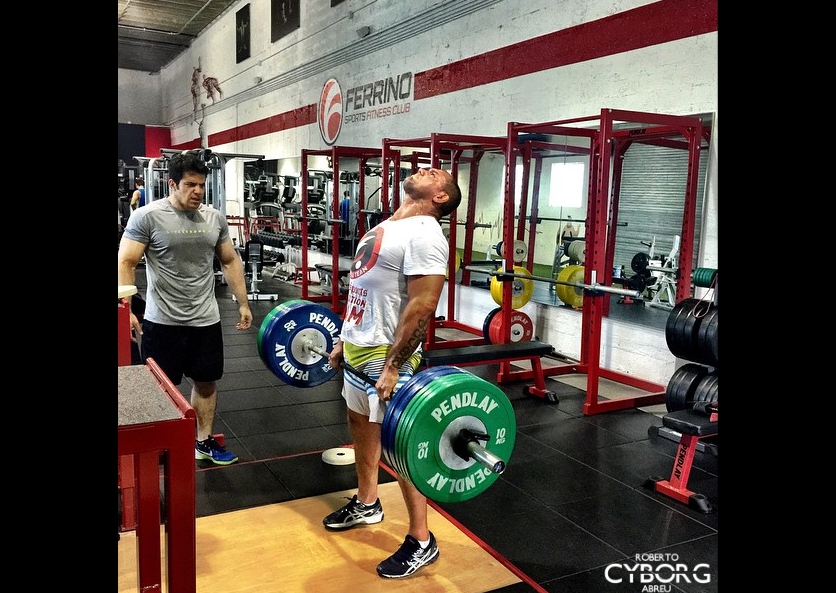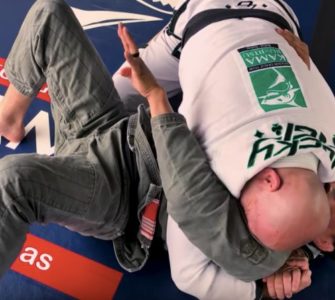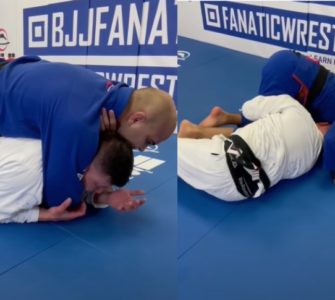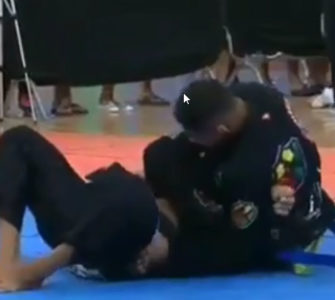Written by and contributed to BJJEE.com by Coach Needham who writes for the excellent website grapplershealth.com. Wayne Needham has been coaching for over 10 years and as an athlete himself competed in a wide variety of sports ranging from shoot fighting to marathons and everything in between. He is also a expert in close quarter combatives and has worked in close protection for international corporations. Today he is one of the top go-to a sports performance/personal trainers in the UK and co founder and director of performance at DN – high performance health and personal training. Hobbies include gymnastics and spending time with his girlfriend Cas and son Jackson.
Today we are going to look at the concept of applying strongman training to combat sports and how this can positively affect the athlete in every area.
When grapplers/mma fighters think of conditioning, they associate it with long runs, shadow boxing with 2.5kg dumbbells, mimicking movements using elastic cables, battling ropes, performing sprawls in a weighted vest, etc.
And circuit training involving pushing sleds with 20kg, running around holding punch bags and slamming them in the floor, doing high rep ab crunches on the floor, trying to increase grip and forearm strength using a barbell on a incline bench and holding a plate in your fingers for time …
This is basically ridiculous, let me explain –
In combat sports you compete in weight divisions: lets say you compete at 90kg after weighing in at 90kg you rehydrate and by the time the competition arrives, within 24 hours you and your competition are weighing 95-100kg.
So this means you need to be able to produce maximal strength qualities of at least 200kg to deal with the opponent.
However, maximal strength -from a velocity point of view- is a slow strength, so this is important because especially in mma you have to deal with striking and in grappling with fighting for positions and scrambles.
So we also have to address dynamic strength qualities, which are sub-maximal loads with maximal velocity = speed strength, which produces a fast rate of force development, meaning to to apply your strength quicker than your opponent.
So if you weigh 100kg after the cut and can’t perform a 1-rm full back squat of at least 200kg, you’re giving yourself a huge disadvantage.
And if your conditioning involves shadow boxing with 2.5kg or using the useless methods already mentioned, you’re training your body to work against minimal resistance; which means you have a severely weak central nervous system and after grappling your opponent and breaking away to strike guess what?
Your muscles will be exhausted, and if the other guy has prepared properly you are going to pay…
OK now the solution alongside pushing up your maximal strength through box squats, back squats, front squats and deadlift variations, bench press, military press, barbell rows, etc, and hurdle jumps, box jumps and med ball and using bands on the barbell to address dynamic strength qualities…
We use strongman training protocols to produce usable maximal strength which transfers to the mat and ring magically.
Strongman training corrects muscular imbalances, strengthens tendons and ligaments, strengthens the central nervous system, shreds body fat and produces huge work capacity, with grip strength like superman, solid abdominal strength and pure mental toughness, and it’s serious fun too!
Here is an example of an aerobic power based strongman workout for grappling sports also addressing structural balance, unilateral work and speed strength:
WORKOUT I
A1 – holding a medicine ball weighing 2-5kg perform 3 reps of a viking toss overhead
A2 – farmers walk – ( wearing metal toe cap boots ) while the athletes walks shout commands forward, left, right, stop, back, so the athlete will be walking forward, then need to walk forward and to the left or stop dead or walk backwards
A3 – zercher carry perform walks in between randomly placed markers
A4 – prowler push using big strides in a straight line or if your athlete is coasting make them push it uphill
A5 – sled drags using thick grip handles: drag the sled while keeping your nose to the sky
Stations are done for 2 minutes each, for a 1 x 10 minute round.
After finishing, rest for 10 minutes and repeat one more time. Weights for all stations excluding A1 should be as close to 2 x body weight as possible.
There we go: aerobic conditioning is a controversial subject for coaches, I like to call it “aerobic phobia”.
This workout would be performed 10-15 weeks out from competition for 4-6 workouts, depending on the trainee. It’s done once a week or every 4-5 days for an athlete with superior recovery.
This will set a solid foundation before we move onto my sports specific energy system work.
Here is an example of an anaerobic alactic capacity session for mma, addressing sports specific energy system work and the athletes’ individual needs:
WORKOUT II
A1 – med ball complex ( 2-5kg ) 1 overhead medicine ball slam into the floor 1 medicine ball chest throw into the wall and 1 medicine ball viking toss overhead done in succession
A2 – tire flip for 2 reps
A3 – wheel barrow sled walking with heel lands for 10 meters in a straight line
A4 – hamstring sled run for 10 meters (stand with your back to the sled grab the straps – they’re going through/in between your legs- keep them knee high walk forward until you feel the torque and then run in a straight line)
A5 – neck sling sled drag for 5 pulls (attach a neck sling to a sled strap hold the neck sling chain and get into a standing good morning bottom position facing the sled. Wear a gum shield and bite into it, then stand up explosively. Walk backwards to reset, complete for reps ) this exercise will make clinch fighting you a nightmare!
Each station is done for stated reps/distance using the heaviest weight possible. Rest 3 minutes after A5 and repeat for 5 sets.
There we go this workout would be done 10-6 weeks out from competition, once every 5-7 days depending on the trainees’ recovery ability, for a total of 4-6 workouts.
Because of the aerobic based built up in the earlier phase the athlete will react very well to this protocol.
OK we are at the end: hope you enjoyed the article and planted some seeds for thought. To end to this article I want to leave you with a quote from Louie Simmons –
“To be a champion, do what others are unwilling to do”.
Wayne Needham
Rolling Strong combines scientific exercises and routines specifically geared towards grappling.
Phil Daru is a performance coach for over 200 Elite Level Fighters in all aspects of combat sports.
Learn a comprehensive approach that covers everything from proper warmups to exercises designed to improve your guard!


















